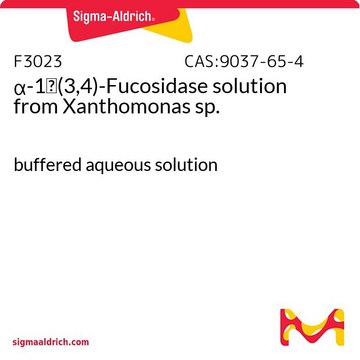H9908
Monoclonal Anti-phospho-Histone H3 (pSer28) antibody produced in rat
~0.5 mg/mL, clone HTA28, purified immunoglobulin, buffered aqueous solution
Sinônimo(s):
Monoclonal Anti-H3S28p
About This Item
Produtos recomendados
fonte biológica
rat
Nível de qualidade
conjugado
unconjugated
forma do anticorpo
purified immunoglobulin
tipo de produto de anticorpo
primary antibodies
clone
HTA28, monoclonal
Formulário
buffered aqueous solution
peso molecular
antigen 15 kDa
reatividade de espécies
bovine, mouse, hamster, human
embalagem
antibody small pack of 25 μL
concentração
~0.5 mg/mL
técnica(s)
flow cytometry: suitable
immunocytochemistry: suitable using 3.7% formaldehyde-methanol fixation
microarray: suitable
western blot: 0.5-1 μg/mL using whole extract of cultured human acute T cell leukemia Jurkat cells treated with Nocodazole.
Isotipo
IgG2a
nº de adesão UniProt
Condições de expedição
dry ice
temperatura de armazenamento
−20°C
modificação pós-traducional do alvo
phosphorylation (pSer28)
Informações sobre genes
human ... H3F3A(3020) , H3F3B(3021) , HIST1H3A(8350) , HIST1H3B(8358) , HIST1H3C(8352) , HIST1H3D(8351) , HIST1H3E(8353) , HIST1H3F(8968) , HIST1H3G(8355) , HIST1H3H(8357) , HIST1H3I(8354) , HIST1H3J(8356) , HIST2H3A(333932) , HIST2H3C(126961) , HIST3H3(8290)
mouse ... H3f3a(15078) , H3f3b(15081) , Hist1h3a(360198) , Hist1h3b(319150) , Hist1h3c(319148) , Hist1h3d(319149) , Hist1h3e(319151) , Hist1h3f(260423) , Hist1h3g(97908) , Hist1h3h(319152) , Hist1h3i(319153) , Hist2h3b(319154) , Hist2h3c1(15077) , Hist2h3c2(97114)
Descrição geral
Especificidade
Imunogênio
Aplicação
Ações bioquímicas/fisiológicas
H3 phosphorylation may contribute to proto-oncogene induction by modulating chromatin structure and releasing blocks in elongation. H3 dephosphorylation occurs quite rapidly after mitosis and serine-10/28 reo main unphosphorylated throughout the remainder of interphase. PP1 has been identified as the H3 phosphatase.
forma física
Nota de preparo
Armazenamento e estabilidade
Exoneração de responsabilidade
Não está encontrando o produto certo?
Experimente o nosso Ferramenta de seleção de produtos.
Código de classe de armazenamento
10 - Combustible liquids
Classe de risco de água (WGK)
WGK 3
Ponto de fulgor (°F)
Not applicable
Ponto de fulgor (°C)
Not applicable
Escolha uma das versões mais recentes:
Certificados de análise (COA)
Não está vendo a versão correta?
Se precisar de uma versão específica, você pode procurar um certificado específico pelo número do lote ou da remessa.
Já possui este produto?
Encontre a documentação dos produtos que você adquiriu recentemente na biblioteca de documentos.
Nossa equipe de cientistas tem experiência em todas as áreas de pesquisa, incluindo Life Sciences, ciência de materiais, síntese química, cromatografia, química analítica e muitas outras.
Entre em contato com a assistência técnica








